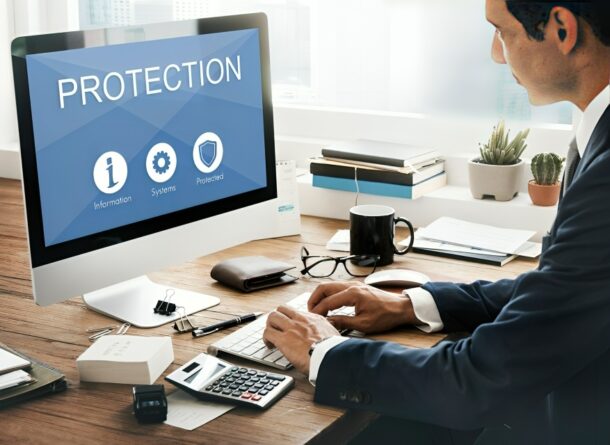Introduction
In the digital-first economy, protecting your brand identity is not just an option; it is an absolute necessity. With the rapid growth of e-commerce and social media marketplaces, counterfeit products are increasingly infiltrating online spaces. Therefore, companies across industries are investing in Brand Protection Safeguards to defend their reputation, revenues, and customer trust.
These safeguards do not merely stop fake goods; rather, they create a strong, proactive system that prevents counterfeiting before it causes irreparable harm.
Understanding Brand Protection Safeguards
To begin with, Brand Protection Safeguards are strategies, tools, and technologies specifically designed to detect, monitor, and act against counterfeit activities. They cover a broad range of actions, from removing fake product listings to shutting down fraudulent websites.
Moreover, these safeguards extend beyond product protection, offering companies a way to secure their digital assets, protect intellectual property, and maintain long-term customer loyalty.
Why Counterfeit Products Pose a Serious Threat
Counterfeit goods are not just a financial burden—they can cause widespread consequences. Businesses that fail to implement Brand Protection Safeguards often experience:
-
Loss of Revenue: Fake products divert sales away from legitimate businesses.
-
Reputation Damage: Customers lose faith when they encounter counterfeit goods.
-
Legal Risks: Companies may face liability if customers are harmed by counterfeit products.
-
Customer Distrust: Consumers may hesitate to purchase online if authenticity cannot be guaranteed.
As a result, the damage often extends beyond immediate profit loss, impacting long-term brand credibility.
How Brand Protection Safeguards Work Online
Unlike traditional enforcement methods, modern online Brand Protection Safeguards leverage technology and data intelligence to provide real-time defense. These methods include:
-
AI-Powered Monitoring: Constant surveillance of e-commerce platforms and social media.
-
Takedown Services: Quick removal of counterfeit product listings.
-
Trademark Enforcement: Ensuring brand rights are legally protected.
-
Domain Management: Preventing the misuse of brand names in fraudulent websites.
-
Data Analytics: Tracking counterfeit patterns to predict and prevent future risks.
Consequently, these safeguards help businesses respond faster and with greater accuracy, minimizing both financial and reputational losses.
The Growing Importance of Proactive Protection
With global e-commerce projected to grow at unprecedented rates, counterfeiters are becoming more sophisticated. Therefore, companies cannot rely solely on reactive measures; instead, they must adopt proactive Brand Protection Safeguards.
Proactive protection means staying ahead of counterfeiters by:
-
Regularly updating detection technologies.
-
Building partnerships with e-commerce platforms.
-
Training staff to identify fraudulent activities.
-
Engaging customers in reporting suspicious products.
By doing so, businesses create a layered defense system that strengthens their online presence.
Benefits of Strong Brand Protection Safeguards
When businesses implement comprehensive Brand Protection Safeguards, they experience benefits that go far beyond reducing counterfeits. Some notable advantages include:
-
Preserved Customer Trust: Consumers feel confident buying genuine products.
-
Stronger Market Share: Authentic goods remain competitive without dilution from fakes.
-
Legal Compliance: Companies avoid costly lawsuits and liabilities.
-
Sustainable Growth: Long-term business success is protected from fraudulent disruptions.
Thus, brand protection is not just about safeguarding today’s sales—it is about securing tomorrow’s growth.
The Role of Experts in Implementation
Equally important, implementing effective brand protection requires specialized expertise. Agencies such as Insprago provide tailored solutions to help businesses combat counterfeiting. With advanced technology, global monitoring networks, and legal support, such providers ensure companies remain resilient against evolving threats.
Their role extends beyond monitoring; they also provide education, legal guidance, and advanced reporting systems to give brands a comprehensive protective framework.
What Businesses Should Consider Before Investing
Before investing in Brand Protection Safeguards, businesses should carefully evaluate:
-
Industry-Specific Risks: Counterfeiting is higher in sectors like fashion, electronics, and pharmaceuticals.
-
Budget Allocation: Effective protection requires investment in technology and legal resources.
-
Customer Engagement: Encouraging customers to report fake products strengthens the brand’s defense.
-
Global Reach: Brands operating internationally need safeguards that extend beyond borders.
Taking these factors into account ensures businesses choose the right protective strategy.
Conclusion
In conclusion, adopting Brand Protection Safeguards is no longer optional—it is essential for any business serious about long-term success. By leveraging advanced technology, proactive monitoring, and expert support, companies can effectively eliminate counterfeit threats while protecting their reputation and customer relationships.
Ultimately, to build a resilient and trusted brand in today’s digital economy, many businesses partner with a digital marketing agency in Dubai that understands the complexities of online brand protection and offers end-to-end strategies for safeguarding growth.
Frequently Asked Questions
1. Who needs Brand Protection Safeguards?
Every business with an online presence, especially in industries prone to counterfeiting, such as fashion, electronics, and healthcare, should invest in them.
2. How do safeguards detect fake products?
They use AI-driven algorithms, web crawlers, and data monitoring systems to scan websites, marketplaces, and social platforms for suspicious listings.
3. Why are counterfeit products so dangerous?
Counterfeit goods not only drain revenue but also compromise safety, quality, and trust. In many cases, they can even pose health risks to consumers.



















